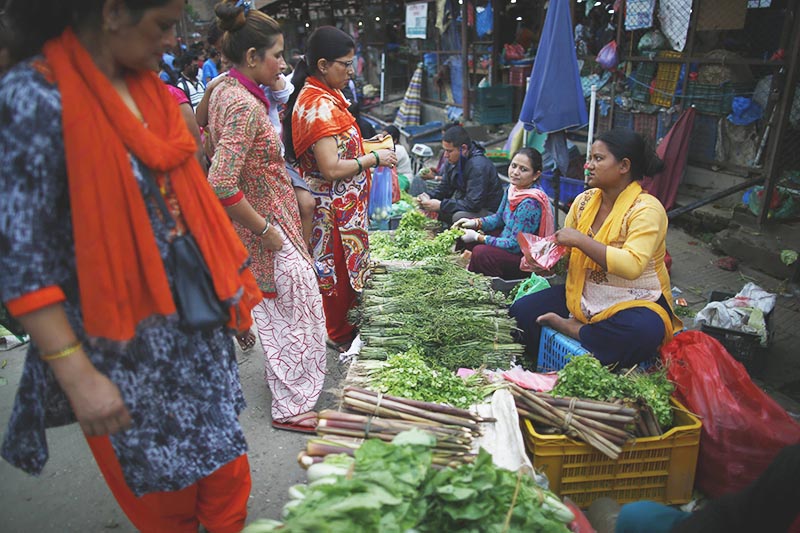Vegetable prices in valley skyrocket
Kathmandu, July 28
When Saurav Shakhakarmi of Sano Thimi went to the market this evening he was shocked to learn that prices of vegetables had gone through the roof. He bought okra for Rs 125 per kg and 100 grams of garlic for Rs 75!
“I remember last year okra cost less than Rs 100 a kg,” he said. “I have to buy even seasonal vegetables at exorbitant prices which has made life difficult, especially for students like me who have come to Kathmandu for studies.”
Suman Tamang, who runs a fast food restaurant in Jadibuti, said he recently paid Rs 120 for one kilo tomatoes and Rs 350 for one kg lemons. “The inflation has made it difficult to operate small shops like mine that cannot afford to pass on the cost to customers,” he said. “The moment we do that we lose clients.”
These are not isolated cases of how soaring prices of vegetables are affecting people, but a norm. Nor are these the only vegetables whose prices have gone up. The price rise is across the board.
Soaring prices
2018
2019
Tomatoes
45
105
Green beans
65
105
Sword beans
75
125
Bitter gourd
65
105
Gourd
65
85
Pointed gourd
65
125
Luffa gourd
65
105
Okra
55
105
Lemon
275
340
Local cucumber
65
110
Compared to last year prices of seasonal vegetables have risen sharply this year. According to Kalimati Fruits and Vegetable Market Development Board, the retail price of green beans is Rs 105 a kg while in July last year it was Rs 65 per kg; sword beans (ghiu simi) cost Rs 125 a kg, whereas last year you could have them for Rs 75 per kg; bitter gourd (karela) costs Rs 105 per kg, gourd (lauka) Rs 85 per kg and pointed gourd (parvar local) costs Rs 125 per kg, but in July last year, they could be bought for Rs 65 per kg; luffa gourd (ghiraula) costs Rs 105 per kg these days, while in July last year it cost Rs 65 per kg; price of okra in Kalimati market is Rs 105 per kg, while in July last year it cost Rs 55 per kg; local cucumber is dearer by Rs 45 kg compared to July last year when it cost Rs 65 per kg; and the retail price of tomatoes at the Kalimati Fruits and Vegetable Market stands at Rs 105 per kg, but last year you could buy them for Rs 45 a kg in July.
According to Khom Prasad Ghimire, president of Federation of Fruits and Vegetable Entrepreneurs in Nepal, late arrival of monsoon, coupled with recent floods, has affected production this year due to which vegetable prices have soared. “Due to late arrival of monsoon farmers could not plant vegetables on time. When they did plant, heavy rains damaged their produce,” he said.
“To make matters worse, vegetable supply from the Tarai has not been regular. That too has affected prices,” Ghimire said. He added that production of seasonal vegetables in vegetable pocket areas, such as Dhading, Gorkha and Kavrepalanchowk, has also declined this year.
Binaya Shrestha, information officer of KFVMDB, said shortage of local products and decline in import of vegetables from India has caused prices to significantly rise this year.
“Due to pesticide testing, most Indian exporters are sending less quantities of vegetables to Nepal. Moreover, local products were damaged in recent floods,” he said. “Hence, it is normal for prices to increase.”
A few days back, the Department of Commerce, Supplies and Consumers Protection had taken action against traders who were selling vegetables at a high price. Nonetheless, prices have been going up unchecked.






